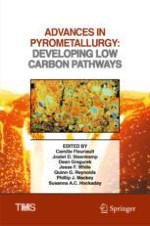Carbon intensive industries are at a crossroads. Long-term manufacturing plans using pyrometallurgical processes all include decarbonization levers: we must solve the problem of fossil-based reduction and fossil-based power generation processes for metals production. This collection explores innovative and diverse strategies for the enablement of low carbon industries in the high-temperature metals and materials processing fields. In particular, the following processes are investigated:
· Electrolysis and electrification of metallurgical processes
· High-temperature electrolytic routes for metal and alloy production
· Use of hydrogen and other alternative non-carbonaceous reducing agents
· Biofuels and other non-fossil reagents for metallurgical applications
· Direct and indirect use of solar energy in high-temperature processing
· Energy efficiency and waste heat recovery concepts applied to pyrometallurgical operations
